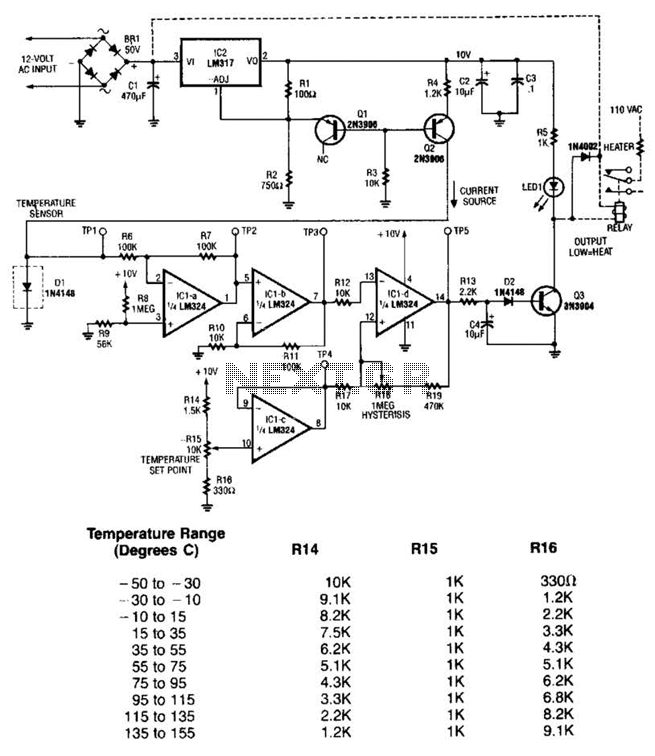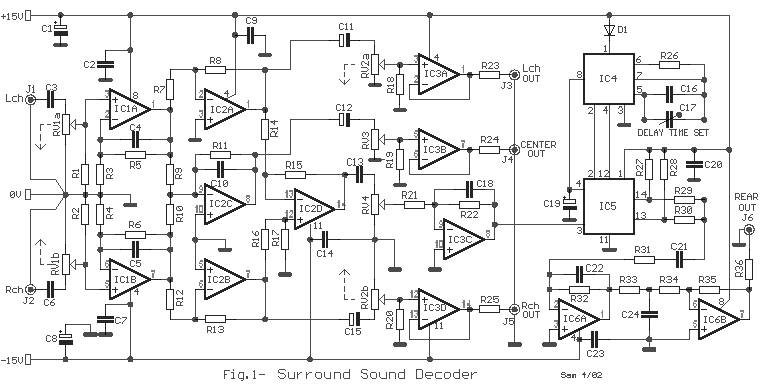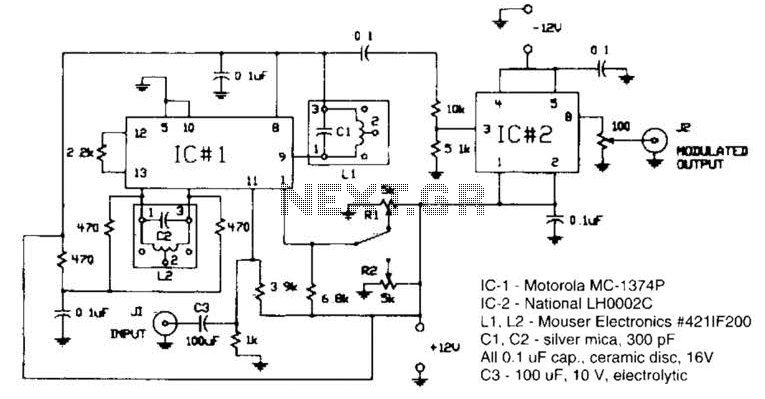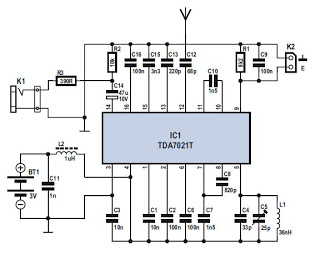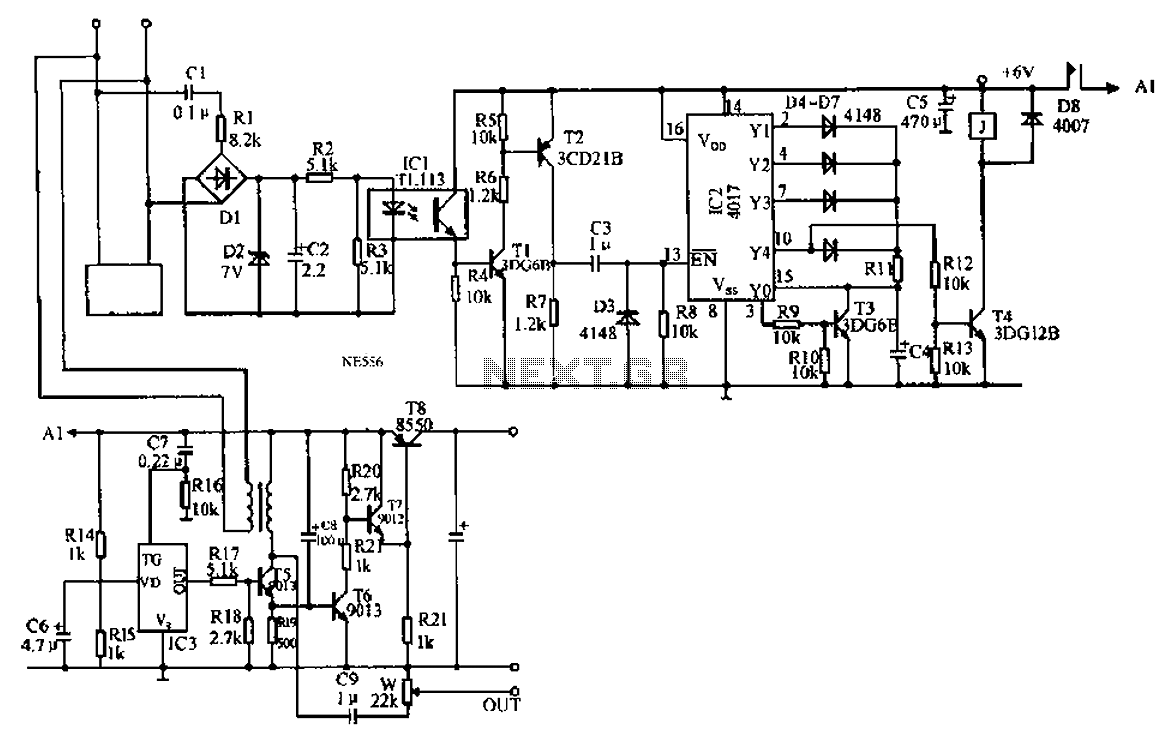
Water alarm circuit
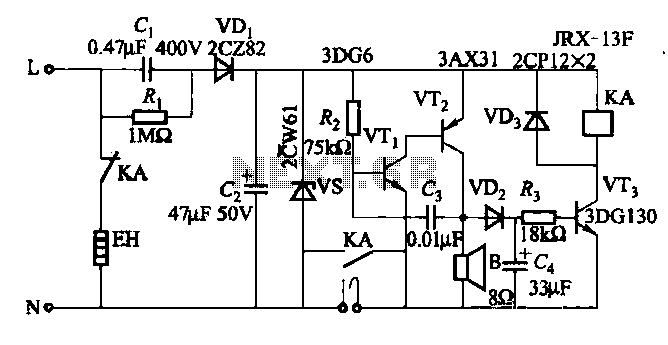
When the water boils, it not only triggers the police but also cuts off the heater power. A temperature sensing element is integrated with a fluorescent neon light bulb, which is restructured within the starter.
The described circuit features a temperature sensing mechanism that activates when water reaches its boiling point. This mechanism serves a dual purpose: it not only signals an alert (referred to as "the police") but also disconnects the heater's power supply to prevent overheating or potential hazards associated with boiling water.
The core of the system is the temperature sensing element, which is designed to detect temperature changes accurately. When the water temperature exceeds a predefined threshold, the sensor activates a relay or a switch that interrupts the power to the heater, effectively shutting it down. This action is critical for safety, ensuring that the heater does not continue to operate when the water has boiled away, which could lead to equipment damage or fire hazards.
Additionally, the integration of a fluorescent neon light bulb within the starter circuit serves as a visual indicator. This bulb illuminates when the water reaches boiling point, providing a clear and immediate visual cue to the user. The restructuring of the light bulb within the starter enhances the overall functionality of the circuit by combining temperature sensing with visual signaling.
Overall, this circuit design emphasizes safety and user awareness in heating applications, leveraging both automatic power cut-off and visual alerts to manage the risks associated with boiling water.When the water boils, it is not only the police, but also cut off the heater power. Temperature sensing element with a fluorescent neon light bulb restructuring within the starter.
The described circuit features a temperature sensing mechanism that activates when water reaches its boiling point. This mechanism serves a dual purpose: it not only signals an alert (referred to as "the police") but also disconnects the heater's power supply to prevent overheating or potential hazards associated with boiling water.
The core of the system is the temperature sensing element, which is designed to detect temperature changes accurately. When the water temperature exceeds a predefined threshold, the sensor activates a relay or a switch that interrupts the power to the heater, effectively shutting it down. This action is critical for safety, ensuring that the heater does not continue to operate when the water has boiled away, which could lead to equipment damage or fire hazards.
Additionally, the integration of a fluorescent neon light bulb within the starter circuit serves as a visual indicator. This bulb illuminates when the water reaches boiling point, providing a clear and immediate visual cue to the user. The restructuring of the light bulb within the starter enhances the overall functionality of the circuit by combining temperature sensing with visual signaling.
Overall, this circuit design emphasizes safety and user awareness in heating applications, leveraging both automatic power cut-off and visual alerts to manage the risks associated with boiling water.When the water boils, it is not only the police, but also cut off the heater power. Temperature sensing element with a fluorescent neon light bulb restructuring within the starter.
